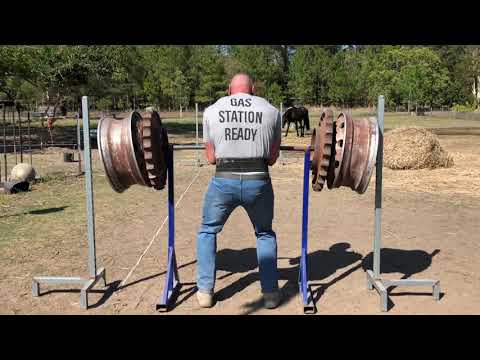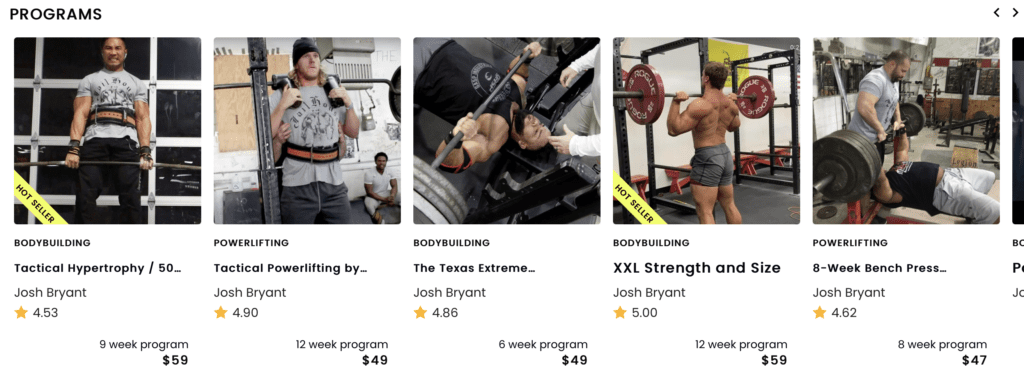Why Strongman Training?
by: Josh Bryant

The adaptations from properly-applied strongman training are a symphony of bigger, faster, and stronger.
Limit strength is not just about success on the powerlifting platform; it’s the bedrock for speed, agility, and all things athletic. Olympic lifting is explosive strength, meaning strength executed with speed. Bodybuilding is sculpting your physique like Michelangelo with swole intentions.
Strongman is the synergistic hybrid of all three disciplines.
As my mentor and dear friend, the late Dr. Fred Hatfield, used to say about training, “There is good, better, and best. And strongman training is the best.”
Still skeptical—let’s take at look at three reasons why to train strongman.
Time Efficiency
The beauty of strongman training is simplicity. Under the supervision of a highly-qualified Soviet defect coach, Olympic lifting can take tedious years to acquire mediocre technique.
Strongman training, on the other hand, has a very small learning curve.
A wildland firefighter, Green Beret, any other tactical athlete, or, hell, regular athletes do not have the time to learn a sport i.e. Olympic lifting, that is often more technical than their occupational demands or athletic demands faced on the field of play.
Even if the athlete is willing and able to commit the requisite time to learn Olympic lifts, this time should be more efficiently used, unless the goal is Olympic lifting competition.
Even in top tier division one football programs, the best athletes in the country execute Olympic lifts with abysmal technique. Juxtaposed to JV athletes riding the pine that can learn efficient technique in strongman movements in one session.
Grip Strength
You will never see a strongman worth a hoot n’ hell with small forearms! Strongman events are highly grip intensive and it is essential to be able to distribute a massive amount of force through your hands.
Picking up sandbags, farmers walking with loads in the neighborhood of your one-repetition maximum deadlift and performing various lifts and carries with abnormally large diameters to grip, requires a huge amount of grip strength.
Grip strength will benefit any physical challenge you encounter, not to mention, increased grip strength is associated with increased life span and a higher cognitive function with aging.
Functional Strength
Strongman training helps you build strength in muscles and positions usually untouched in traditional lifting programs because it revolves around moving irregular objects. Developing those overlooked muscles, including stabilizer muscles, helps in your day-to-day movement, your other training, and even when you are four sake bombs deep at the Don Ho Cover band show and the Big Kahuna wants to do the toe-to-toe mambo.
Traditional functional training is often a bizarre amalgam of “Sweatin’ to the Oldies”, bosu balls, and pink dumbbells. The issue is both science and anecdotes show training with less than 60 percent of a trained athlete’s one-repetition max (1RM) strength does little to develop their strength.
Alpine skiers routinely require force production in an unstable bosu-like environment, the same cannot be said for tactical athletes or defensive linemen. With strongman training unlike other “functional training”, heavy weight is not the sacrificial lamb.
Strongman training, unlike machines or even barbells and dumbbells, requires you to lift heavy, asymmetrical loads in a multi-planar environment. You are forced to make adjustments in your positioning, this induces mammoth muscle tension in positions your body is not accustomed to.
With barbells and dumbbells, the objective is to build a repeatable pattern as you are pushing pulling and gripping in linear fashion.
Think of lifting a sandbag, the weight shifts in an unpredictable manner, just like a suspect as an officer wrangles him to the ground. Keeping with the sandbag example, your core and entire body work double time to stabilize the weight. Additionally, your grip is screaming as you hold and support the weight.
Final Thoughts
Strongman, as a competitive sport, demands and builds limit strength, conditioning, mobility, core strength, powerful triple extension, grip strength, explosive strength, stability, multi-planar strength, muscle hypertrophy and a strong posterior chain.
As an athlete or Joe citizen who would not want any of these things?
Get one of Josh’s programs that includes strongman events HERE.

